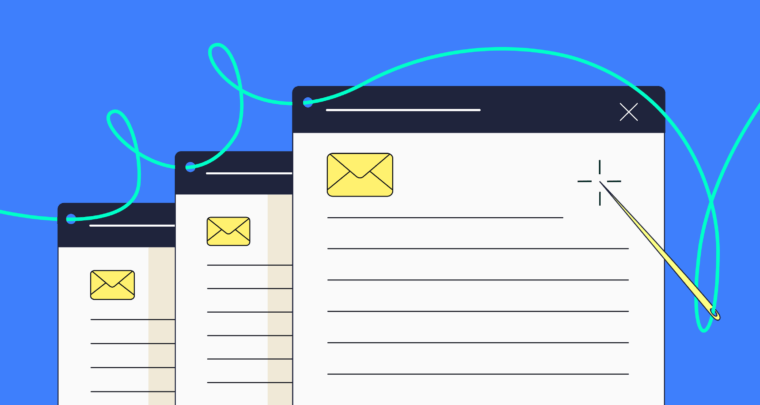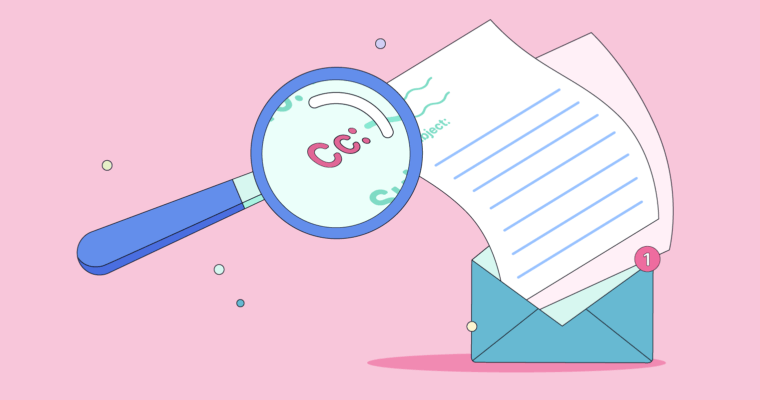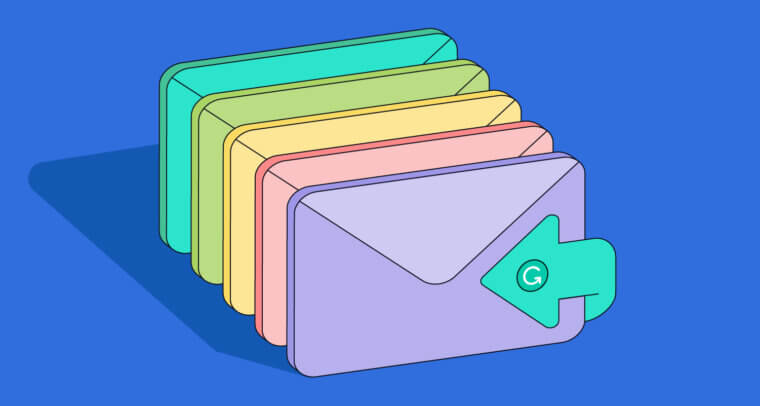
If you’ve ever second-guessed an email you sent at work, this guide is for you. Consider this your go-to resource for leaving a good impression in the inbox.
You use professional emails for many aspects of your professional life—from communicating with your manager to reaching out to a potential employer, networking contact, or anyone connected to your work. Professional emails have their own set of rules and etiquette to show that you mean business. We’ll cover those too.
What is a professional email?
A professional email is a formal, business-oriented way of communicating online with anyone related to your career. Professional emails should be concise, clear, and neatly formatted with a clear call to action. They should also be mistake-free.
Your best practices may vary based on your context and relationship with the recipient. Here are a few things to consider before hitting send:
Use a professional tone
You can tailor your email’s tone based on your relationship with the recipient. No matter what, be polite and respectful. Start your email with a salutation and use the recipient’s title where appropriate. Before sending your email, scan it for any spots where you’ve been overly emotional or used more slang than appropriate. Sign off with a proper email ending.
Format your professional email
This is a formal email and needs to be formatted as such. From top to bottom, these tips will help you format your email properly.
- Use a clear, purposeful, and descriptive subject line
- Use a professional greeting
- Make it readable with sections, bulleted lists, and concise paragraphs
Keep it concise
Part of professional email etiquette is respecting the recipient’s time. Get to the point straight away. Include the purpose of your email in the opening sentences. Trim your email to keep it short and topical while eliminating redundancy. Maintain professionalism while adding a personal touch to the language.
Types of professional emails, with examples
Here are 10 of the most common types of professional emails, with examples.
1 Introductory email example
An email that introduces yourself or someone else in order to establish a connection or initiate a working relationship.
Subject: Introduction — [Your Name]
Dear [Recipient’s name],
I hope this email finds you well. My name is [X], and I am reaching out to introduce myself. I’m a [your position/role] and learned about your [project/work] through [mutual contact/website]. I am excited to connect and explore [potential collaboration or partnership] between our organizations.
[Brief background and reason for the introduction.]
I look forward to potentially working together. Please feel free to reach out if you have any questions or want to discuss further.
Best regards,
[Your full name]
Introducing someone else
Subject: Introduction via [The someone else’s Name]
Hi [Recipient’s name],
I am reaching out to introduce [person’s name]. [More details about the person you’re introducing.]
[Brief background and reason for the introduction.]
I’ll let you both continue the conversation from here, and hope you can find mutual benefit in this connection.
[Your full name]
2 Cold email example
A cold email is an unsolicited email sent to a recipient you don’t know, with the aim of establishing a connection.
Subject: Potential Collaboration on [X]?
Hi [Recipient’s name],
I’m [name], and I’m [position/role] at [company]. I recently came across [recipient’s work/organization] and was impressed by [specific aspect]. I’d love to explore the potential collaboration between our organizations if you’re open to it.
[Brief introduction, value proposition, and call to action.]
I’d appreciate the opportunity to chat further if you have a moment. Please add a meeting time to my calendar with this link.
Thanks for your consideration.
Talk soon,
[Your full name]
3 Reminder email example
A reminder email lets someone know a meeting, deadline, or task is coming up.
Subject: Reminder: [Upcoming event/deadline]
Dear [Recipient’s name],
Friendly reminder that [event/deadline] is coming up on [date and time].
[Brief details and any additional information.]
Have questions? You’re welcome to reach out—just reply to this email. Looking forward to it!
See you soon,
[Your full name]
4 Follow-up email example
A follow-up email is sent after a previous interaction—usually in thread—to check progress, seek feedback, or inquire about the next steps.
Subject: Follow-up on [topic]
[Recipient’s name],
I hope you’re doing well! I’m following up on our recent discussion about [topic].
[Brief summary, any additional information, and a specific inquiry.]
Looking forward to hearing from you soon.
With appreciation,
[Your full name]
5 Email job application example
An email sent to apply for a job, including a cover letter and résumé.
Subject: [Your name]’s Application for [Job Title] Position
Dear Hiring Manager,
I’m writing to express my interest in the [job title] position advertised on your company’s website. Please find my cover letter and résumé attached below. I’m excited to contribute my skills and experience to your team.
[Brief cover letter content highlighting relevant qualifications.]
Thank you for considering my application. I’d love to talk with you more about the position.
Sincerely,
[Your full name]
6 General interest email example
An email expressing general interest, often used for networking or seeking information.
Subject: Seeking guidance on [topic]
Dear [Recipient’s name],
I came across your profile on [platform] and noticed your expertise in [topic]. I am currently [briefly explain your situation or interest].
[Specific questions or requests for guidance.]
I’d love any insights or advice you might have whenever you have a free moment. Thanks for your help! If you’d rather, I’d be happy to do a quick virtual coffee chat—please let me know and I’ll send you a calendar invitation.
Best regards,
[Your full name]
7 Reply-all email example
An email responding to a message sent to multiple recipients, visible to all recipients.
Subject: Re: [original subject]
Hi everyone,
Thank you for your quick responses. I agree with the points raised and believe [additional input or action].
[Additional content as needed.]
Best regards,
[Your full name]
8 Confirmation email
An email sent to confirm details such as appointments, reservations, or agreements.
Subject: Confirmation of [appointment/reservation/agreement]
Dear [Recipient’s Name],
This email is to confirm our [meeting/appointment/reservation] scheduled for [date and time].
[Details and any additional information.]
Please let me know if there are any changes or if you have any questions. Looking forward to our [meeting/appointment/reservation].
Best,
[Your Full Name]
9 Thank you email example
An email expressing gratitude, often sent after a meeting, interview, or favor.
Subject: Thank you for [specific task/occasion]
Dear [Recipient’s name],
I wanted to express my gratitude for [specific reason]. Your [time/assistance/input] was greatly appreciated.
[Brief mention of the impact and a closing statement.]
Thank you again, and I look forward to [future interactions/working together].
Best,
[Your full name]
10 Recap email example
An email summarizing key points, decisions, or outcomes of a meeting or discussion.
Subject: Recap of [meeting/event]
Hi [Recipient’s name],
I wanted to send a recap of our recent [meeting/event] so we’re on the same page.
[Brief summary of key points, decisions, and any action items.]
Please let me know if I need to add any additional thoughts or clarifications. Thank you for your time and collaboration.
Best regards,
[Your full name]
Let Grammarly help you with your email
Grammarly can help with all of the above, whether it’s striking the right tone, finding the perfect words, or achieving conciseness. Grammarly’s AI email writer makes it easy to draft and reply to emails in seconds.






